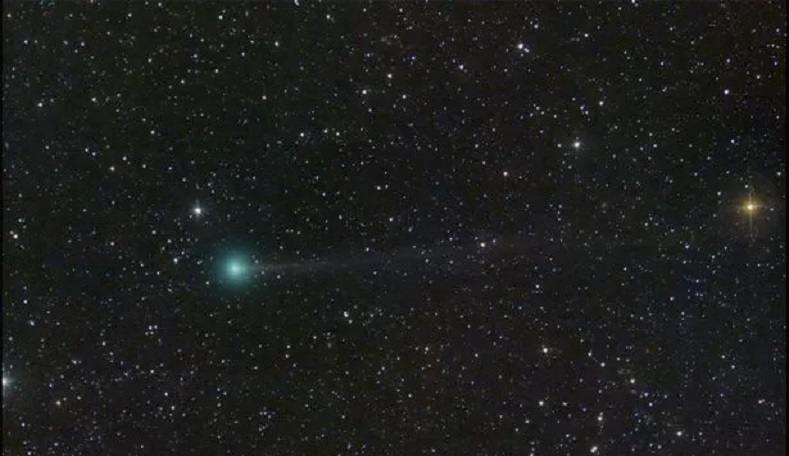A rare and exciting celestial event is unfolding in our northern skies this week as the Green Comet Nishimura, also known as C/2023 P1, approaches its closest point to the sun. Discovered just a month ago by amateur astronomer Hideo Nishimura, this green-tailed comet is giving stargazers a unique opportunity to witness its beauty. Here’s what you need to know about this remarkable cosmic visitor.
Spotting the Green Comet
For those of us living in the northern hemisphere, now is the time to turn our gaze skyward. Comet Nishimura’s green tail is shining brightly in the early morning hours as it steadily moves closer to the sun. You can catch a glimpse of this celestial wonder until September 17th, with the best viewing moments being in the early morning. However, as it gets nearer to the sun, it will become increasingly difficult to see. After September 17th, visibility from the northern hemisphere may be challenging, but there’s a chance it might still be visible from the southern hemisphere.
Getting a Better View
To locate Comet Nishimura in the night sky, consider using a stargazing app that can help you pinpoint its exact position from your location. If you’re struggling to spot it with the naked eye, grab a pair of binoculars. With binoculars, you should be able to discern the comet’s tail, making for a more captivating experience. Without visual aids, it might appear as a blurry blob, so binoculars are your best bet for a clearer view.
The Rarity of Green Comets
Green comets like Nishimura are a rare treat for skywatchers. Unlike most comets, which are often discovered well in advance of their visibility, Nishimura’s recent discovery has made it an exceptional find. Typically, we have more time to prepare for comets gracing our skies. However, this green comet’s appearance is a bit of an astronomical surprise.
What Makes It Green
You might be wondering why this comet appears green. The answer lies in its coma, the gas cloud that surrounds its nucleus. Comet Nishimura contains a unique type of carbon gas known as diatomic carbon, which consists of two carbon atoms bonded together. This distinctive carbon gas gives the comet its vibrant green hue.
A Peek into the Comet’s Origins
Comets like Nishimura are intriguing celestial objects. They are essentially icy rocks that orbit the sun, originating from a region called the Oort cloud, located in the outer reaches of our solar system. These comets follow elongated paths and occasionally make their way into the inner solar system, providing us with stunning celestial displays.
Conclusion
As we witness the passage of the Green Comet Nishimura, let us appreciate the beauty and wonder of our universe. This rare cosmic event reminds us of the mysteries that surround us in the vast expanse of space. So, set your alarms, grab your binoculars, and don’t miss this once-in-a-lifetime opportunity to behold the green-tailed marvel that is Comet Nishimura as it graces our northern skies. Happy stargazing!
